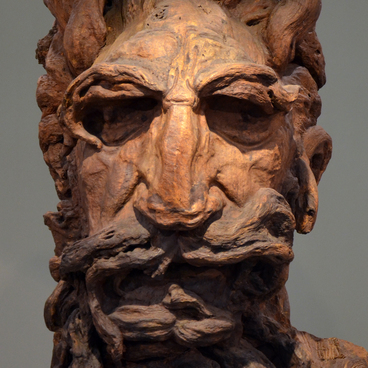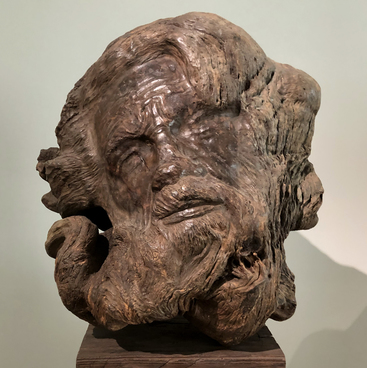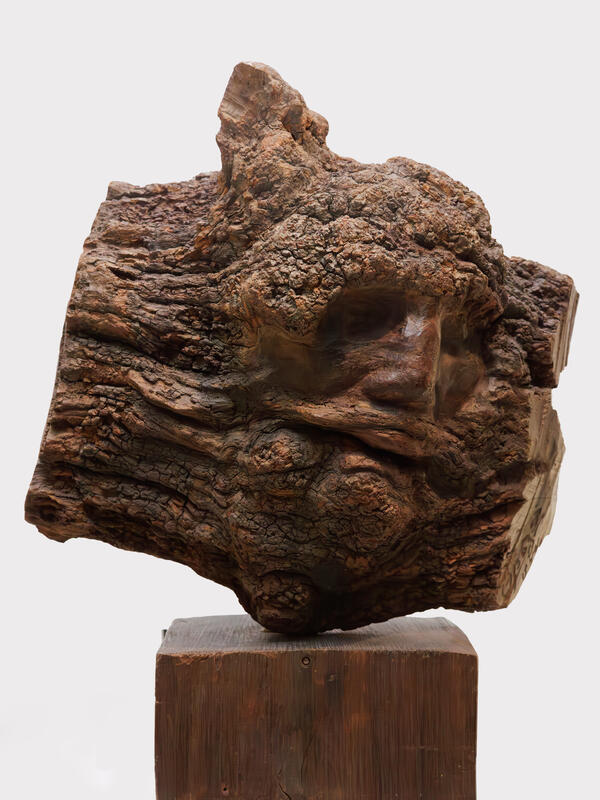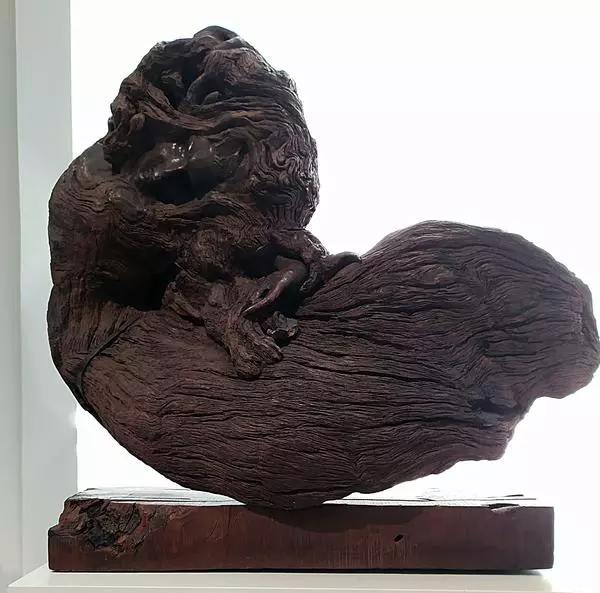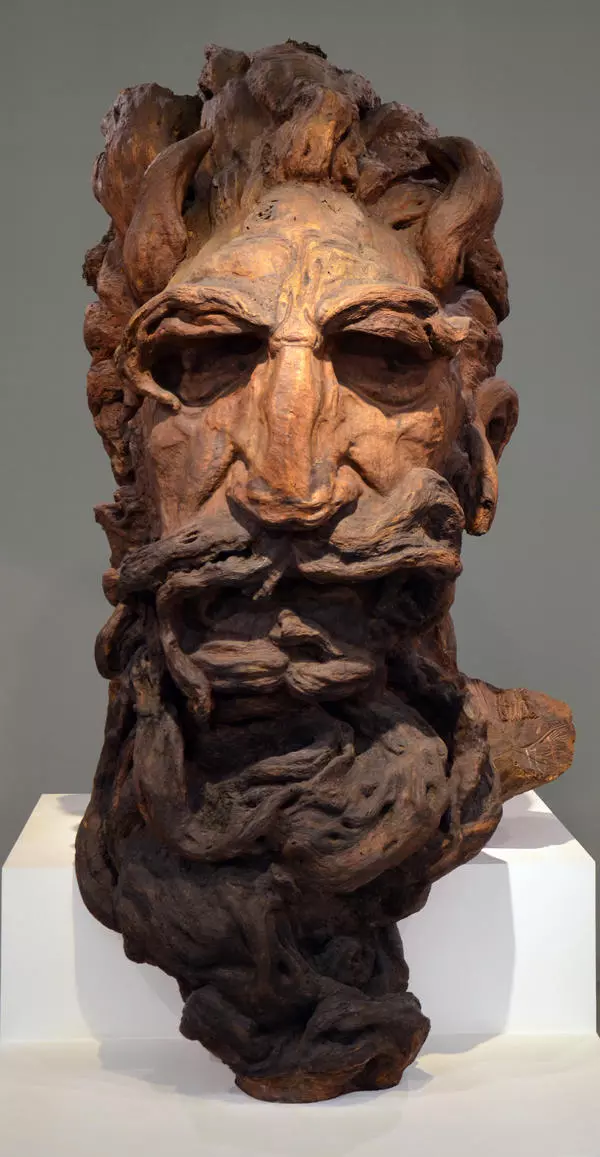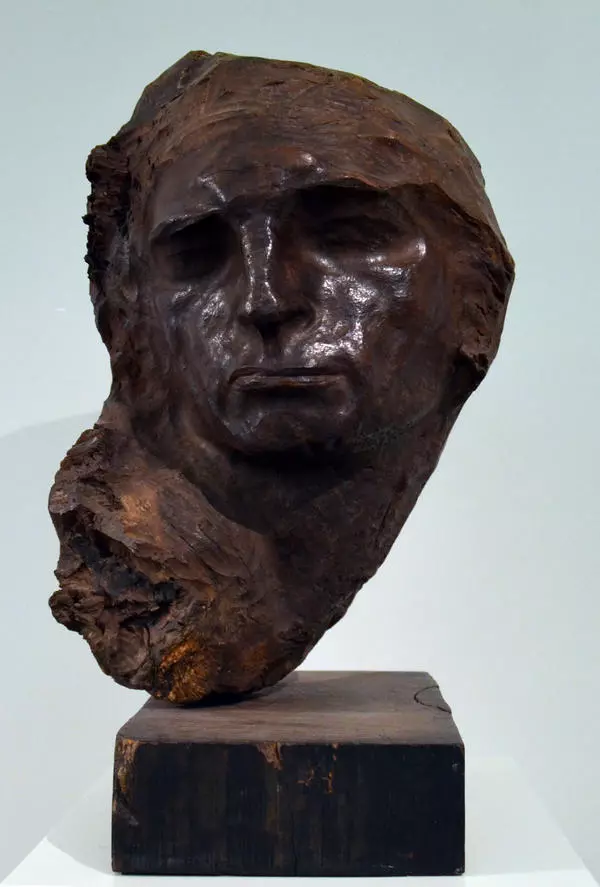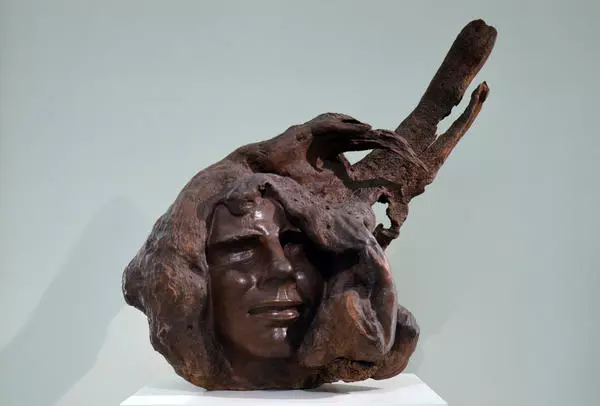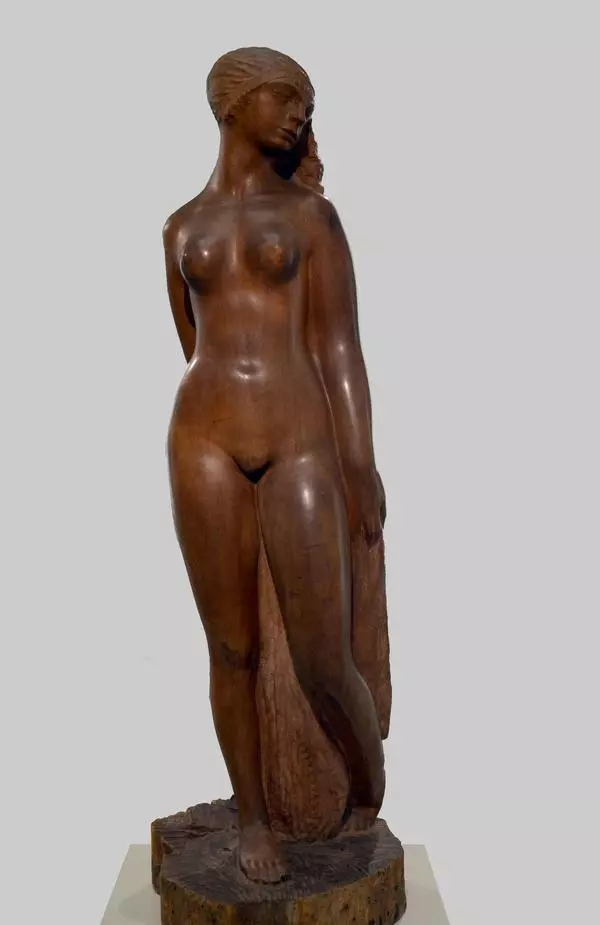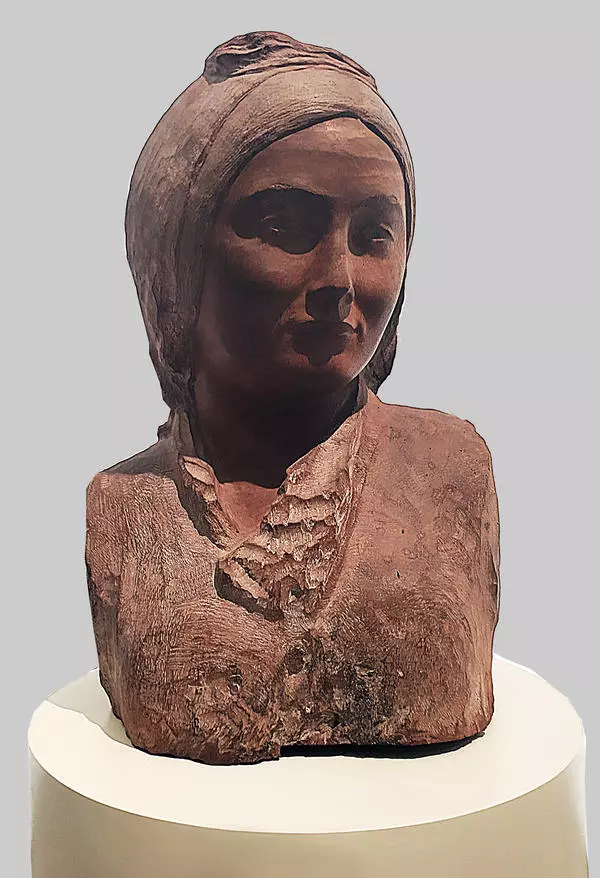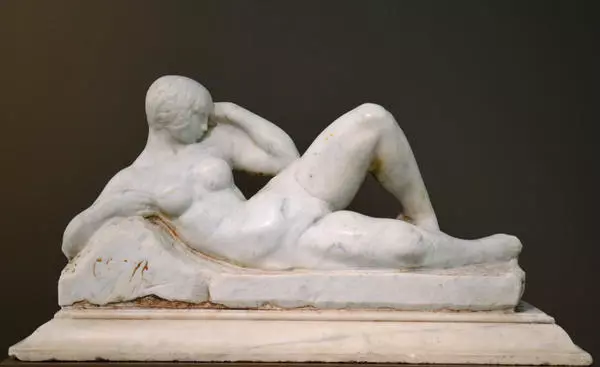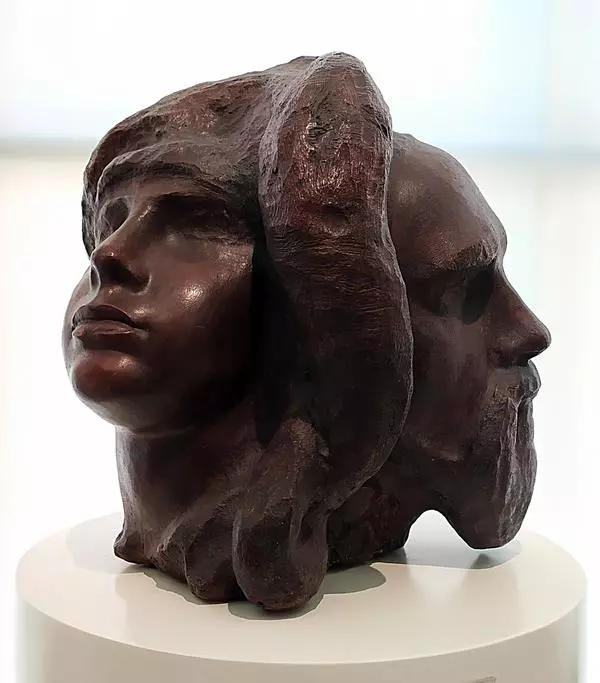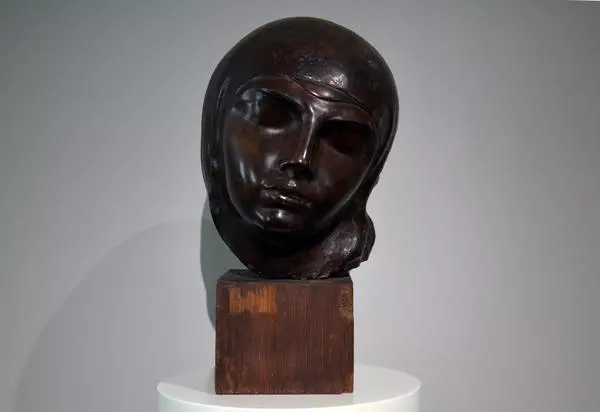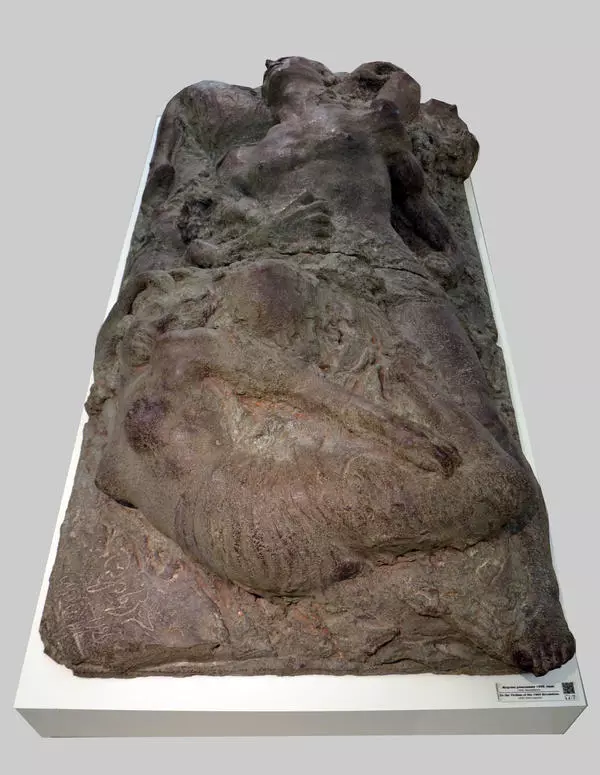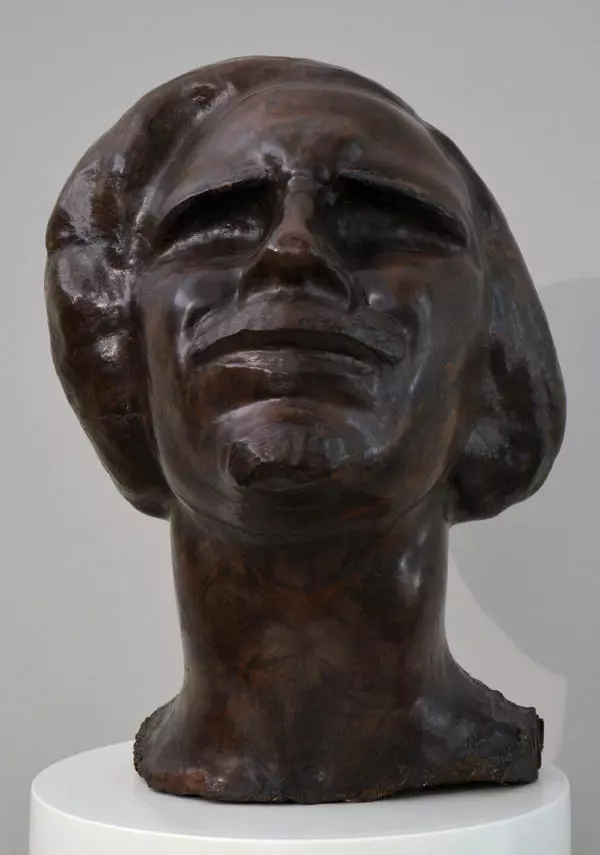Stepan Nefyodov was born in 1876 in a peasant family, and he later adopted Erzia as a pseudonym after the Erzya ethnic group within the Mordovian national group that he belonged to. He started training in icon paining and pictorial art from well-known Russian artists, continued developing his sculpturing talent in Italy where he learned to use various materials from traditional marble to concrete and pig iron, as well as exotic varieties of wood.
Erzia saw the October Revolution in Moscow and declared himself to be a supporter of the Soviet state. He was one of the first sculptors that took part in monumental propaganda projects.
In Ekaterinburg, the author created a range of works celebrating labor, fraternity and freedom, then he opened creative workshops in Baku, Batumi and Novorossiysk and engaged in educational activities. At the same time, he completed numerous monuments and sculptural portraits of historical figures, outstanding people of literature and arts.
After time, relations with the Soviet authorities became more difficult, and Erzia decided to emigrate to Argentina, where he learned to work with new exotic materials. Quebracho became a discovery for the artist. It is a collective name given to several sub-tropical South American types of trees that have very hard wood.
The Argentinian period added new genres to his works, in particular the retrospective (history) portrait. In most cases, Erzia used no sketches for his works while artfully sculpting the natural shape of the chosen wood.
One of the most important features of Erzia’s works is that the likeness of the portrait and the actual face was secondary, as he found it more important to reflect the person’s inner state. If, at first sight, the works of the author produce the impression that the image does not match the generally accepted view, then later, as you study them closer, you start to understand the artist’s thinking and embark on the process of recognizing old and finding new traits in a seemingly familiar face.
In this respect, the Alexander Nevsky sculpture created in 1931 is a bright example of such approach. There is no specific historical evidence of the great Russian military leader’s appearance. The artist’s observations from real life and the power of imagination materialized in an allegory resulted in interesting plastic and composition solutions.
The sculptural portrait of Alexander Nevsky organically combines the image of the celebrated warrior from legends and tales with the image of the specific wise Russian man, a prince and a commander.
The material chosen by Erzia turned into an integral part of the image and the means of artistic expression. Only part of the sculpture was cut with a chisel - that is the face of the prince that shows masculinity and mighty power, - whereas the natural wood gnars form the strands of hair and the long beard, the helmet and the cloak blown up by the wind.
Erzia portrayed Nevsky precisely the way he remains in the memory of the people: a wise ruler, a brave warrior, and a worthy servant of God.
Erzia saw the October Revolution in Moscow and declared himself to be a supporter of the Soviet state. He was one of the first sculptors that took part in monumental propaganda projects.
In Ekaterinburg, the author created a range of works celebrating labor, fraternity and freedom, then he opened creative workshops in Baku, Batumi and Novorossiysk and engaged in educational activities. At the same time, he completed numerous monuments and sculptural portraits of historical figures, outstanding people of literature and arts.
After time, relations with the Soviet authorities became more difficult, and Erzia decided to emigrate to Argentina, where he learned to work with new exotic materials. Quebracho became a discovery for the artist. It is a collective name given to several sub-tropical South American types of trees that have very hard wood.
The Argentinian period added new genres to his works, in particular the retrospective (history) portrait. In most cases, Erzia used no sketches for his works while artfully sculpting the natural shape of the chosen wood.
One of the most important features of Erzia’s works is that the likeness of the portrait and the actual face was secondary, as he found it more important to reflect the person’s inner state. If, at first sight, the works of the author produce the impression that the image does not match the generally accepted view, then later, as you study them closer, you start to understand the artist’s thinking and embark on the process of recognizing old and finding new traits in a seemingly familiar face.
In this respect, the Alexander Nevsky sculpture created in 1931 is a bright example of such approach. There is no specific historical evidence of the great Russian military leader’s appearance. The artist’s observations from real life and the power of imagination materialized in an allegory resulted in interesting plastic and composition solutions.
The sculptural portrait of Alexander Nevsky organically combines the image of the celebrated warrior from legends and tales with the image of the specific wise Russian man, a prince and a commander.
The material chosen by Erzia turned into an integral part of the image and the means of artistic expression. Only part of the sculpture was cut with a chisel - that is the face of the prince that shows masculinity and mighty power, - whereas the natural wood gnars form the strands of hair and the long beard, the helmet and the cloak blown up by the wind.
Erzia portrayed Nevsky precisely the way he remains in the memory of the people: a wise ruler, a brave warrior, and a worthy servant of God.


